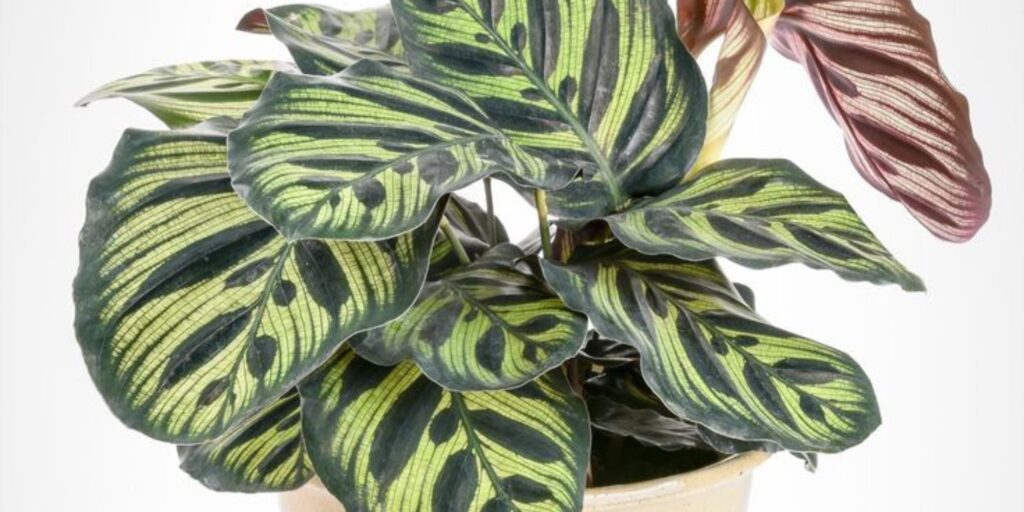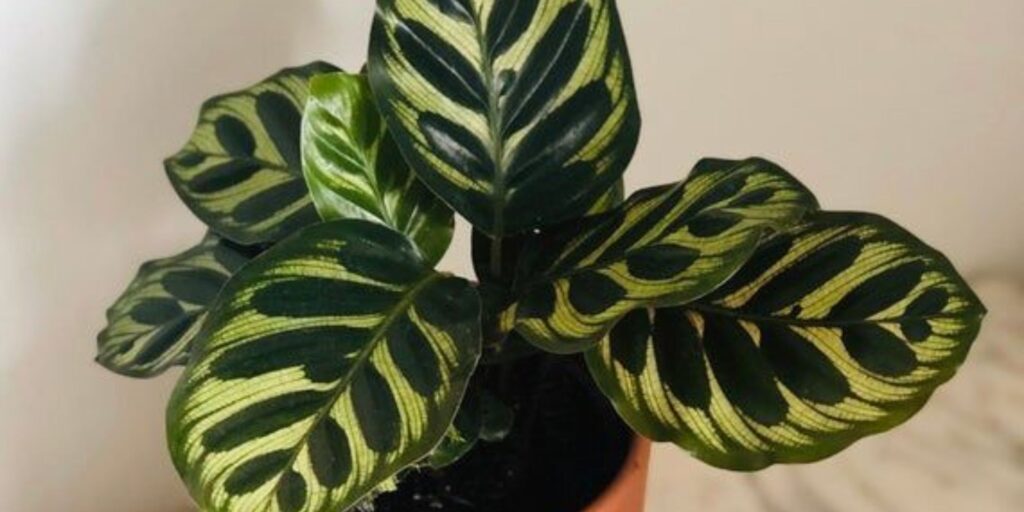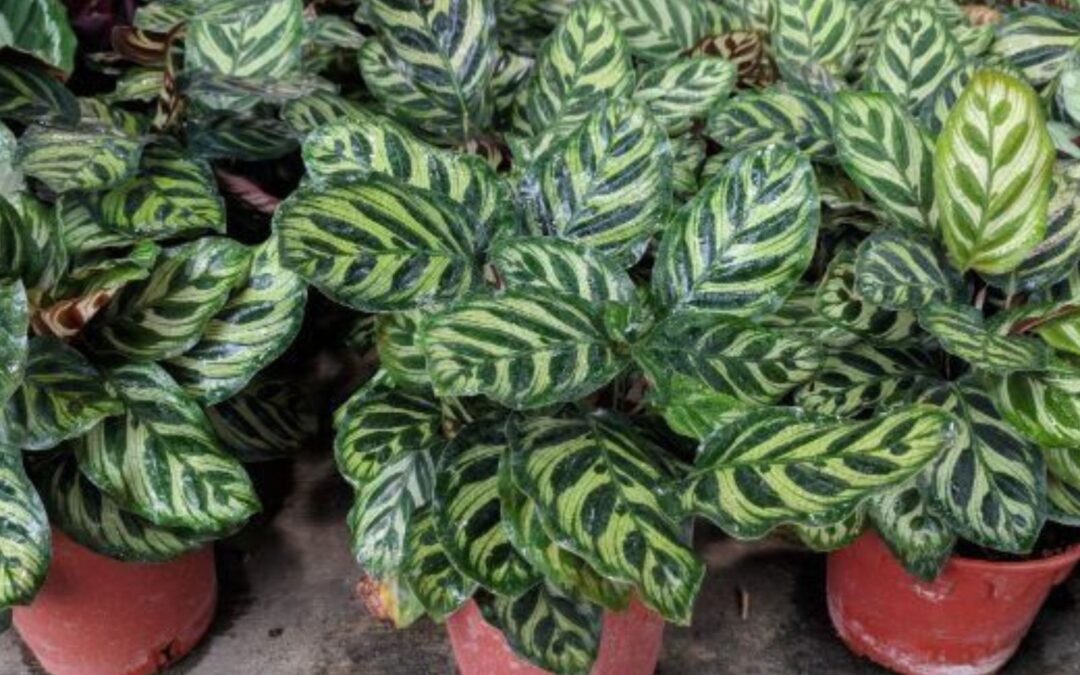Introduction
Peacock plants, also known as Calathea makoyana, are a stunning addition to any indoor garden. With their vibrant foliage and unique patterns resembling peacock feathers, it’s no wonder they’ve become a favorite for plant lovers. However, caring for these beauties can seem daunting at first glance. Fear not! This ultimate guide will walk you through everything you need to know about nurturing your peacock plant to thrive in your home. From understanding the types of peacock plants to tips on propagation and pest management, you’ll be equipped with all the knowledge needed to keep your green companion healthy and lush. Let’s dive into the enchanting world of peacock plants!
The Ultimate Guide to Caring for Your Peacock Plant: Tips and Tricks

Caring for your peacock plant is all about providing the right environment. These tropical beauties love warm temperatures and high humidity, so consider placing them in a bathroom or kitchen where moisture levels are naturally higher.
Watering should be consistent but not excessive; let the top inch of soil dry out before giving it another drink. Remember, they prefer filtered water to avoid chemical buildup.
Fertilizing once a month during the growing season can help your peacock plant flourish. Use a balanced liquid fertilizer diluted to half strength for optimal results without overwhelming the roots. Keep an eye on their leaves for any signs of distress—adjust care as needed!
Types of Peacock Plant
Peacock plants are a stunning addition to any indoor garden. The most popular variety is the Calathea makoyana, known for its striking leaf patterns resembling peacock feathers. Its rich green leaves with purple undersides create a visual treat that brightens up any space.
Another notable type is the Calathea orbifolia, which boasts broad, round leaves with beautiful light and dark green stripes. This plant not only adds texture but also brings an air of elegance to your collection.
Consider the vibrant Calathea lancifolia or Rattlesnake Plant. Its elongated leaves feature wavy edges and distinct markings, making it a unique choice among peacock plants that stand out in any setting.
Pruning Peacock Plant
Pruning your Peacock Plant helps maintain its vibrant appearance and encourages healthy growth. Focus on removing any yellow or brown leaves, which are signs of stress or age. This simple step can rejuvenate the plant’s look.
Use sharp, clean scissors to make precise cuts. Trim just above a leaf node to promote new growth in that area. Regular pruning not only enhances aesthetics but also improves air circulation around the plant.
Aim to prune during the growing season, typically spring and summer. Be gentle; over-pruning can shock your Peacock Plant, leading to stunted growth. A little care goes a long way in keeping this stunning foliage lush and lively.
Propagating Peacock Plant
Propagating your Peacock Plant can be a rewarding experience. The best method is through division, which works well when repotting. Carefully remove the plant from its pot and inspect the root system for natural divisions.
Using clean, sharp scissors or shears, separate the sections making sure each one has roots attached. This way, you’ll ensure that both new plants have a good chance of thriving in their pots.
After dividing them, replant each section into fresh soil and water thoroughly. Place them in bright, indirect light to encourage growth. Within weeks, you should see signs of new life as they establish themselves in their new homes.
How to Grow Peacock Plants from Seed
Growing a peacock plant from seed can be rewarding, though it requires patience. Start with high-quality seeds from a reputable source to ensure healthy growth. Soak the seeds in water for 24 hours before planting, which helps kickstart germination.
Use a well-draining potting mix and fill small pots or trays. Plant the seeds about ¼ inch deep and keep them moist but not soggy. Covering them with plastic wrap can help maintain humidity levels, promoting faster germination.
Place your pots in a warm area with indirect light. It usually takes two to three weeks for sprouts to emerge. Once seedlings reach about four inches tall, you can transplant them into larger pots for continued growth.
Potting and Repotting Peacock Plants

Potting and repotting your Peacock Plant is essential for its health. Choose a well-draining potting mix, ideally one that retains some moisture but allows excess water to escape. A mixture of potting soil, perlite, and orchid bark works wonders.
When selecting a new pot, ensure it’s just slightly larger than the current one. This helps prevent overwatering while giving room for growth. Look for pots with drainage holes; they’re crucial in preventing root rot.
Repot your plant every 1-2 years or when you notice roots growing out of the drainage holes. Spring is the best time to do this as your plant enters its active growth phase. Gently remove the old soil and check for any signs of disease before replanting.
Overwintering
Overwintering your Peacock Plant is crucial for its health during colder months. These tropical beauties prefer warmth and humidity, so keeping them cozy is a priority. As temperatures drop, ensure they are sheltered from drafts and extreme cold.
Adjust watering habits in winter. The plant’s growth slows down, requiring less moisture. Check the soil regularly; water only when the top inch feels dry to prevent root rot.
Consider adding a humidifier or placing a pebble tray filled with water nearby if your home becomes too dry. This helps maintain ideal humidity levels that keep your Peacock Plant thriving even during winter’s chill.
Common Pests & Plant Diseases
Peacock plants, while beautiful, can attract certain pests. Common offenders include spider mites and aphids. These tiny bugs love the soft leaves of your plant and can cause significant damage if not addressed promptly.
Fungal infections are another concern for peacock plants. If you notice yellowing leaves or a white powdery substance on surfaces, it may signal a fungal issue. Maintaining proper airflow around your plant helps mitigate this risk.
Preventative measures are key to keeping your peacock plant healthy. Regularly inspect the foliage for any signs of trouble and wipe down leaves with a damp cloth to reduce dust buildup that attracts pests. Early detection ensures a thriving indoor garden!
Common Problems With Peacock Plant
Peacock plants are stunning, but they can encounter a few common issues. One frequent problem is leaf curling or browning. This usually indicates inadequate humidity or irregular watering. Ensure your plant gets enough moisture in the air and adjust your watering routine accordingly.
Another issue is yellowing leaves, which often signals overwatering. Check the soil’s drainage and ensure you’re not letting it sit in soggy conditions. Adjust your care to keep roots healthy and thriving.
If you notice slow growth or leggy stems, it might be time for more light! Peacock plants love bright indirect sunlight; too little energy can stunt their growth significantly. Assess their placement to encourage lush foliage development.
Temperature and Humidity
Peacock plants thrive in warm, humid environments. Ideally, they prefer temperatures between 65°F and 80°F (18°C to 27°C). Sudden temperature drops can stress the plant, leading to wilting or leaf curl.
Humidity is essential for the health of your peacock plant. Aim for at least 50% humidity. You can increase humidity by misting the leaves regularly or placing a humidifier nearby.
Another method is to set your pot on a tray filled with water and pebbles. As the water evaporates, it will create moisture around your plant. Keeping these conditions steady will help ensure vibrant foliage and encourage healthy growth throughout the year.
Fertilizer
Fertilizing your peacock plant is essential for promoting healthy growth and vibrant foliage. During the growing season, typically spring and summer, opt for a balanced liquid fertilizer diluted to half strength. This will provide the nutrients your plant craves without overwhelming it.
Apply the fertilizer every four to six weeks while ensuring that the soil remains moist but not overly saturated. Monitor your plant’s response; if you notice yellowing leaves, consider reducing feeding or adjusting the formula used.
In fall and winter, when growth slows down, cut back on fertilization altogether. Your peacock plant needs a break from nutrient intake during this dormant period to thrive in its next growth cycle.
Is Calathea makoyana poisonous?
Calathea makoyana, commonly known as the Peacock Plant, is cherished for its stunning foliage and vibrant patterns. If you’re considering adding this beauty to your home, you might wonder about its safety around pets and children.
The good news is that Calathea makoyana is non-toxic. This makes it a fantastic choice for households with curious pets or little ones who tend to explore their surroundings by tasting everything in sight.
While ingestion of any plant can cause mild stomach upset in some cases, it’s generally safe to keep this eye-catching plant indoors without worrying about toxicity issues. Enjoy the lush leaves without fear!
Customize Your Pot
Choosing the right pot for your peacock plant can enhance its beauty and health. Consider using pots with drainage holes to prevent waterlogging, which can lead to root rot. The material of the pot plays a significant role too—ceramic and terracotta are great options for moisture retention.
Personalize your pot by selecting colors or patterns that complement your home decor. A vibrant ceramic pot can make a stunning statement, while a minimalist design might suit modern interiors better.
Don’t forget about size! Ensure the pot is large enough to accommodate growth but not so big that it overwhelms the roots. This balance supports healthy development while showcasing your plant beautifully in any room.
Companion & Alternative Plants

Choosing the right companion plants for your peacock plant can enhance both aesthetics and health. Consider pairing it with other humidity-loving tropical plants like ferns or peace lilies. These companions thrive in similar conditions, creating a lush indoor environment.
If you’re looking for alternative options, snake plants or pothos are excellent choices. They add variety without competing for resources. Plus, they tolerate lower light levels, making them versatile partners.
When selecting companion plants, ensure that their watering needs align with those of your peacock plant. This way, you create a harmonious space where each plant can flourish together while maintaining optimal care routines.
Placement Tips
When it comes to placing your Peacock Plant, consider its need for bright, indirect light. These plants thrive in a spot where they can soak up filtered sunlight without the harsh rays directly hitting their leaves. Avoid placing them near drafty windows or doors; sudden temperature changes are not ideal.
Humidity is also essential for these tropical beauties. A bathroom or kitchen with sufficient moisture can be perfect. If those areas aren’t available, consider using a humidifier or pebble tray filled with water beneath the pot to increase humidity levels.
It’s best to avoid crowded spaces as well—Peacock Plants appreciate some personal space to grow and flourish. Rotate your plant occasionally so all sides receive equal light exposure, promoting balanced growth and preventing legginess.
By carefully considering placement, you help ensure that your Peacock Plant remains vibrant and healthy while becoming a stunning focal point in your home decor.

